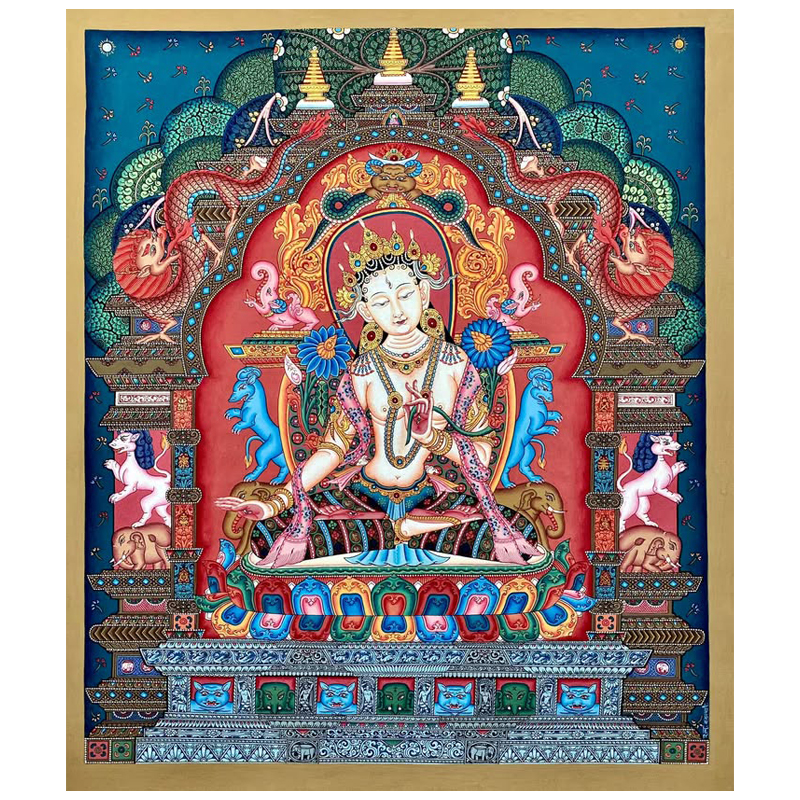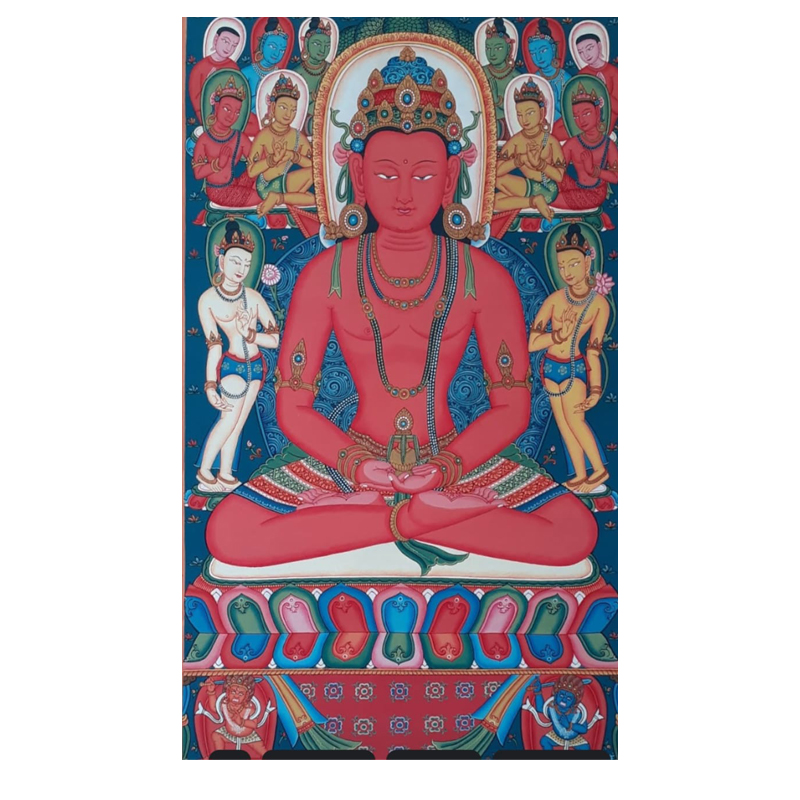

This is a traditional Newari Paubha painting depicting White Tara, a revered Buddhist deity symbolizing compassion, longevity, and healing. The artwork exhibits intricate details and vibrant colors characteristic of the Newari style, which emphasizes precision and ornamentation.
Key Elements in the Painting:
White Tara’s Appearance:
- Seven Eyes: White Tara is traditionally portrayed with seven eyes—three on the face (forehead and two regular eyes) and one on each palm and sole. These symbolize her omniscient vision and ability to see and alleviate the suffering of sentient beings.
- Mudra (Hand Gesture): One hand is in the gesture of giving (varada mudra), while the other holds a lotus flower (utpala), symbolizing purity and enlightenment.
- Adornment: The deity is adorned with exquisite jewelry and a crown, emphasizing her divine status and beauty.
Background and Structure:
- Arch and Throne: The deity is seated on a richly decorated throne with a multi-tiered lotus base, signifying spiritual purity and detachment from worldly impurities.
- Mythical Creatures: The painting includes protective mythical creatures, such as lions and makara (mythical aquatic beings), symbolizing strength and protection.
- Dragons and Floral Motifs: Dragons represent power and protection, while the floral motifs and vines symbolize the interconnectedness of life and growth.
Symbolism of Colors:
- The predominance of white represents Tara’s purity, wisdom, and compassionate nature.
- Red and blue accents create a striking contrast, enhancing the visual appeal and conveying spiritual depth.
Celestial and Natural Elements:
- Stupas and Forest Scene: The stupas at the top indicate the presence of enlightened energy, while the lush greenery signifies harmony with nature.
- Small Deities and Animals: Surrounding figures and animals add to the narrative richness, representing various aspects of spiritual protection and enlightenment.
